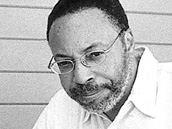The Lost Art of Reading: Why Books Matter in a Distracted Time
By David L. Ulin
Seattle, WA: Sasquatch Books, 2010
160 pp., $13
Objects for Study
by William Forrestall
Frederiction, NB: Broken Jaw Press, 2011
147 pp., $36
David L. Ulin’s The Lost Art of Reading: Why Books Matter in a Distracted Time is a topical essay, one of those current-issue books that the U.S. book market generates regularly for cognoscenti to debate and for travellers, impatient with fiction, to ponder. Of course, the topic should interest writers, publishers, educators, librarians, journalists, and anyone who has ever delighted in holding a book, turning back its pages, and entering into a realm of thought, dream, and argument different from those that one normally invents, remembers, or knows.
Indeed, Ulin’s title is even a tad alarmist: To suggest that reading is a lost art is to suggest that seeing itself, or thinking, or breathing, are also imperilled. But maybe such bleak prophecy is only bad news for those who do not think of reading materials as fuel for bonfires, but as intellectual treasures. Certainly, Ulin is preaching to the converted: who else but readers would buy his book? Then again, some forms of reading, of intellectual interaction with printed text (not electronic bits and bytes), are likely in decline, due to competition from screens (computer, TV, pads, pods, and phones), not to mention the e-book. The digital revolution makes more information and entertainment available to more people in more places faster; and looking-and-listening (absorbing) is less challenging brainwork than is reading. The result is the old (moral) divide: gratification now (watching) versus deferred pleasure (reading). So why read—printed books?
For Ulin, the question is occasioned by his teenage son, who prefers the excitement of video games and the bling and blip of electronic communication to the seemingly more sedate – staid – pleasures of reading literature, such as The Great Gatsby by F. Scott Fitzgerald. Ulin experiences a crisis of confidence in the (old-fashioned) book. How can it compete with the bells and whistles of the new gadgetry? Well, the answer is conservative. Trashy pleasures and propaganda (lies) are eventually deleted or pulped.
At it’s best, says Ulin, “literature … offers … a slicing through of all the noise and ephemera, a cutting to the chase.” Recalling the 2008 U.S. presidential election campaign, Ulin suggests that Barack Obama was the candidate of the literate, while Sarah Palin was not only a proud yahoo, she seemed functionally illiterate.
To go further, Ulin says that “reading is a revolutionary art.” To engage with a text that challenges one’s morals, one’s beliefs, or to enter into the world, imagined or recollected, of an alien consciousness (and everyone’s mind is alien to everyone else’s), is to be forced to think or to dream anew. Such lucubration must frighten thought-police – the guardians of the status-quo – everywhere.
In the end, Ulin makes peace with the wired world, discovering that “reading can exist in a variety of different forms.” He’s right about that. The book may become electronic – read and deleted to make way for the new upload/download. But there’s much to be said for brick-and-mortar libraries as there is to be said for gold deposits in brick-and-mortar banks: Both make deception more difficult, and both hold real value. Ulin’s screed is readable. But the best defense of the library is George Orwell’s 1984; and the best defense of the book is Ray Bradbury’s Fahrenheit 451. Read them and weep. From The Lost Art of Reading, we go to New Brunswick artist William Forrestall’s drawings and paintings of the excavated “lost art” of ancient Egyptian clay objects, left in graves, apparently for use in the afterlife.
In Objects for Study, Forrestall reproduces 38 black & white illustrations and photos, plus 10 colour plates of his paintings, all reflecting his study of artifacts found in the Ashmolean Museum (Oxford) and the British Museum (London). Forrestall considers these items as subjects for still life rendering. For me, the most poignant paintings are “Three that are Broken,” “Easter II,” and “Three Flowers and the Offerings of Time.”
Brief essays by R.M. Vaughan, Virgil Hammock, Leopoldo C.J. Kowolik, and Forrestall himself serve to introduce the art. For Vaughan, drawing is an act of love; Hammock says it is the “handwriting of the artist”; Kowolik sees still life as a contradiction of the vanity of existence. Forrestall understands his “objects for study” as still life pieces come literally – powerfully – from the grave itself.
It is wonderful that Broken Jaw Press has given Forrestall such a loving presentation. It is especially grievous, then, that Forrestall’s fine essay is injured, on p. 32, by either editorial inattention or a botched printing job.






No Comments so far ↓
There are no comments yet...Kick things off by filling out the form below.